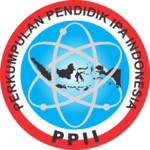STEM Approach to 4C Skills in Elementary School Students: A Systematic Literature Review
(1) Pendidikan Guru Sekolah Dasar, Fakultas Pendidikan dan Sains, Universitas Swadaya Gunung Jati, Kota Cirebon, Indonesia
(2) Pendidikan Guru Sekolah Dasar, Fakultas Pendidikan dan Sains, Universitas Swadaya Gunung Jati, Kota Cirebon, Indonesia
(3) Pendidikan Guru Sekolah Dasar, Fakultas Pendidikan dan Sains, Universitas Swadaya Gunung Jati, Kota Cirebon, Indonesia
(4) Pendidikan Guru Sekolah Dasar, Fakultas Pendidikan dan Sains, Universitas Swadaya Gunung Jati, Kota Cirebon, Indonesia
(5) Pendidikan Guru Sekolah Dasar, Fakultas Pendidikan dan Sains, Universitas Swadaya Gunung Jati, Kota Cirebon, Indonesia
(*) Corresponding Author
Abstract
Keywords
Full Text:
PDFReferences
Abdullah, N., Halim, L., & Zakaria, E. (2014). VStops: A thinking strategy and visual representation approach in mathematical word problem solving toward enhancing STEM literacy. Eurasia Journal of Mathematics, Science and Technology Education, 10(3), 165-174.
Astuti, N., Riswandi, Efendi, U., & Utami, N. R. (2021). Implementation of science technology engineering and mathematics approach in learning to critical thinking skills of fifth-grade elementary school students in Lampung Province. Journal Asia-Pacific Forum on Science Learning and Teaching, 21(1).
Baker, C. K., & Galanti, T. M. (2017). Integrating STEM in elementary classrooms using model-eliciting activities: responsive professional development for mathematics coaches and teachers. International Journal of STEM Education, 4, 1-15.
Beers, S. (2011). 21st century skills: Preparing students for their future.
Bybee, R. W. (2010). Advancing STEM education: A 2020 vision. Technology and engineering teacher, 70(1), 30.
Cahyana, C., Hamdu, G., Lidinillah, D. A. M., & Apriliya, S. (2020). Electrical Tandem Roller (ETR) Media for 4C Capabilities Based Stem Learning Elementary Schools. International Journal of Elementary Education, 4(2), 169.
Dilmen, I., & Atalay, N. (2021). The Effect of the Augmented Reality Applications in Science Class on Students' 21st Century Skills and Basic Skills. Journal of Science Learning, 4(4), 337-346.
Erdem, A. (2019). Robotics Training of Science and Arts Center Teachers: Suleymanpasa/Tekirdag Sample. Journal of Education and Training Studies, 7(7), 50–61.
Fiorintina, E., Sukmaningrum, A., Rohana, S., & Rahayaan, F. (2023). Stem Approach in Supporting 21st Century Digitalization Era Learning at Elementary School Level. Proceedings of the National Seminar on Research and Service Results. 2022, 3078-3085.
Guven, İ., & Alpaslan, B. (2022). Investigation of the Effects of Interdisciplinary Science Activities on 5th Grade Students’ Creative Problem Solving and 21 st Century Skills. TOJET: The Turkish Online Journal of Educational Technology, 21(1), 80-96.
Hanif, S., Wijaya, A. F. C., & Winarno, N. (2019). Enhancing Students’ Creativity through STEM Project-Based Learning. Journal of Science Learning, 2(2), 50.
Ilma, A.Z., Wilujeng, I., Widowati, A., Nurtanto, M., Kholifah, N. (2023). A Systematic Literature Review of STEM Education in Indonesia (2016-2021): Contribution to Improving Skills in 21st Century Learning. Pegem Egitim ve Ogretim Dergisi, 13(2), 134-146.
Irmayani, O., Lidinillah, D. A. M., & Putri, A. R. (2023). Developing STEM Learning Design with Mini Projector Media in Grade V of Elementary School. Cendekia Journal: Journal of Mathematics Education. 7(3), 2688-2702.
Karimah, F., & Wulandari, F. (2023). The Effect of STEM-Integrated Project-Based Learning on Elementary School Students' Science Literacy Skills. Journal of Science Education Research. 9(11), 10446-10456.
Khalishah, N., & Mahmudah, U. (2022). Analysis of STEM (Science, Technology, Engineering, And Mathematics) Learning Development on 21st Century Skills. Proceedings of Santika 2: National Seminar on Mathematics Tadris UIN K.H. Abdurrahman Wahid Pekalongan. 2, 417-431.
Kocakaya, S., & Ensari, Ö. (2018, June). Physics pre-service teachers' views on STEM activities. In Asia-Pacific Forum on Science Learning & Teaching (Vol. 19, No. 1).
Kurt, M., & Benzer, S. (2020). An Investigation on the Effect of STEM Practices on Sixth Grade Students’ Academic Achievement, Problem Solving Skills, and Attitudes towards STEM. Journal of Science Learning, 3(2), 79-88.
Lestari, T. P., & Sarwi & Sri, S. . (2018). STEM-Based Project Based Learning Model to Increase Science Process and Creative Thinking Skills of 5 th Grade. Journal of Primary Education, 7(1), 18-24.
Miftach, Z. (2018). Application Of Science, Technology, Engineering, Mathematics (STEM) Approach To Improve Critical Thinking Skills Of 5th Grade Students In Science Learning. Pendas: Scientific Journal of Basic Education. 08 (September), 53–54.
Morrison, J. (2006). Attributes of STEM education: The student, the school, the classroom. TIES (Teaching Institute for Excellence in STEM), 20(2), 7.
Muslim, I. R., Akrom, M., Tri Wuryani, M., Bagus Primadoni, A., & Kusumawati, D. (2023). The Effect of STEM-PJBL Approach on Critical Thinking Skills of Elementary School Students. LAMBDA: Scientific Journal of Mathematics and Natural Sciences Education and Its Applications. 3(3), 131-139.
Nurlenasari, N., Lidinillah, D. A. M., Nugraha, A., & Hamdu, G. (2019, October). Assessing 21st century skills of fourth-grade student in STEM learning. In Journal of Physics: Conference Series (Vol. 1318, No. 1, p. 012058). IOP Publishing.
Oktavia, Z., & Ridlo, S. (2020). Critical Thinking Skills Reviewed from Communication Skills of the Primary School Students in STEM-Based Project-Based Learning Model. Journal of Primary Education, 9(3), 311-320.
Permanasari, A., Rubini, B., & Nugroho, O. F. (2021). STEM Education in Indonesia: Science Teachers’ and Students’ Perspectives. Journal of Innovation in Educational and Cultural Research, 2(1), 7-16.
Rahayu, A. S., & Maryani, I. (2023). STEM-PjBL and creativity of science learning students in elementary schools. Journal of Professional Teacher Education, 1(2), 72-83.
Ramdhani, A. (2021). Benefits of Information Technology on Employee Performance: A Systematic Literature Review (SLR). Chemistry, 1-15.
Rusminati, S. H., & Juniarso, T. (2023). Literature Study: STEM to Foster 21st Century Skills in Elementary Schools. Journal on Education, 5(3), 10722-10727.
Sahabudin, A., Andriani, P., & Ghazali, M. (2024). The Effect of STEM-Based Mathematics Learning on Critical Thinking Ability of Elementary School Students. Jurnal Pendidikan Matematika (JPM), 10(1), 01-09.
Saputri, V., & Herman, T. (2022). Integrasi STEM dalam pembelajaran matematika: dampak terhadap kompetensi matematika abad 21. JPMI (Jurnal Pembelajaran Matematika Inovatif), 5(1), 247-260.
Sasangbong, S., & Huntula, J. (2022). Development creativity of grade 5 students on electricity through STEM education. Journal of Physics: Conference Series, 2145(1).
Siouli, S., Dratsiou, I., Antoniou, P. E., & Bamidis, P. D. (2018). Primary School STEM Education Through Co-Creative Methodologies. In Cc-Tel/Tackle@ Ec-Tel.
Sulistia, S., Lidinillah, D. A. M., Nugraha, A., & Karlimah, K. (2019). Promoting engineering for fourth-grade students through STEM learning. Journal of Physics: Conference Series, 1318(1), 0-6.
Suripto, S., Fabirah, N. R., Nanna, A. W. I., & Bua, M. T. (2023). Science, Technology, Engineering, and Mathematics (Stem) in Exploring Students' Critical Thinking Skills. AKSIOMA: Journal of Mathematics Education Study Program, 12(1), 319.
Taufik, D., Verain, M. C., Bouwman, E. P., & Reinders, M. J. (2019). Determinants of real-life behavioural interventions to stimulate more plant-based and less animal-based diets: A systematic review. Trends in Food Science & Technology, 93, 281-303.
Thovawira, F. A., Safitri, I., Supartik, S., Sitompul, N. N. S., & Anggriyani, I. (2021). Systematic Literature Review: Implementation of the Stem Approach (Benefits and Challenges) in Indonesia. HISTOGRAM: Journal of Mathematics Education, 4(2), 355-371.
Togou, M. A., Lorenzo, C., Lorenzo, E., Cornetta, G., & Muntean, G.-M. (2018). Raising Students’ Interest in Stem Education Via Remote Digital Fabrication: an Irish Primary School Case Study. EDULEARN18 Proceedings. 1(July), 2835-2840.
Ubaidillah, M., Hartono, H., Marwoto, P., Wiyanto, W., & Subali, B. (2023). How to improve critical thinking in physics learning? A systematic literature review. Journal of Educational, Cultural and Psychological Studies (ECPS Journal), (28), 161-187.
Ultay, N., Zıvalı, A., Yılmaz, H., Bak, H. K., Yılmaz, K., Topatan, M., & Kara, P. G. (2020). STEM-Focused Activities to Support Student Learning in Primary School Science. Journal of Science Learning. 3(3), 156-164.
Wakhid, A., Zaenuri, Z., Sugiman, S., Isnarto, I., & Cahyono, A. N. (2023). Mathematical Creative Thinking Ability in STEM-Approach Learning. JIIP - Scientific Journal of Education Science, 6(5), 3545-3551.
Wang, L., & Chiang, F. K. (2020). Integrating novel engineering strategies into STEM education: APP design and an assessment of engineering‐related attitudes. British Journal of Educational Technology, 51(6), 1938-1959.
White, M. (2022). Investigating the Responses of Children in First Grade Engaged in STEM Lessons. Journal of Research in Education, 31(1), 1-26.
Winarni, E. W., Karpudewan, M., Karyadi, B., & Gumono, G. (2022). Integrated PjBL-STEM in Scientific Literacy and Environment Attitude for Elementary School. Asian Journal of Education and Training, 8(2), 43-50.
Yavuz, Ü., & Duban, N. Y. (2021). Primary School Students ’ Interests on Professions and Opinions. International Technology and Education Journal, 5(1), 21-31.
Yusri, A. Z. and D. (2020). Literature Review: STEM In Elementary School Learning. Journal of Education Science. 7(2), 809-820.
Zengin, R., Kavak, T., Keçeci, G., & Zengin, F. K. (2022). The Impact of STEM Applications on Problem-Solving Skills of 4th-Grade Students. Journal of Science Learning, 5(3), 386-397.
DOI: 10.24235/sc.educatia.v13i1.18062
Article Metrics
Abstract view : 18 timesPDF - 2 times
Refbacks
- There are currently no refbacks.
Scientiae Educatia: Jurnal Pendidikan Sains indexed by:

This work is licensed under a Creative Commons Attribution 4.0 International License.



1.png)












